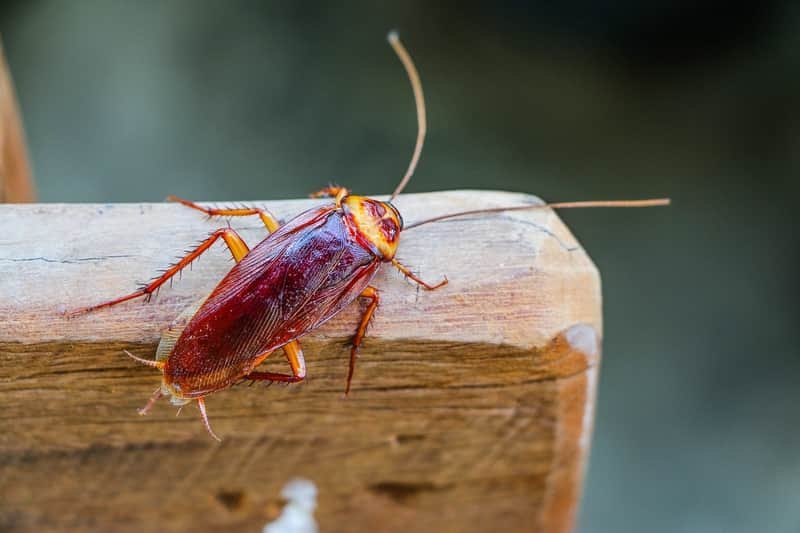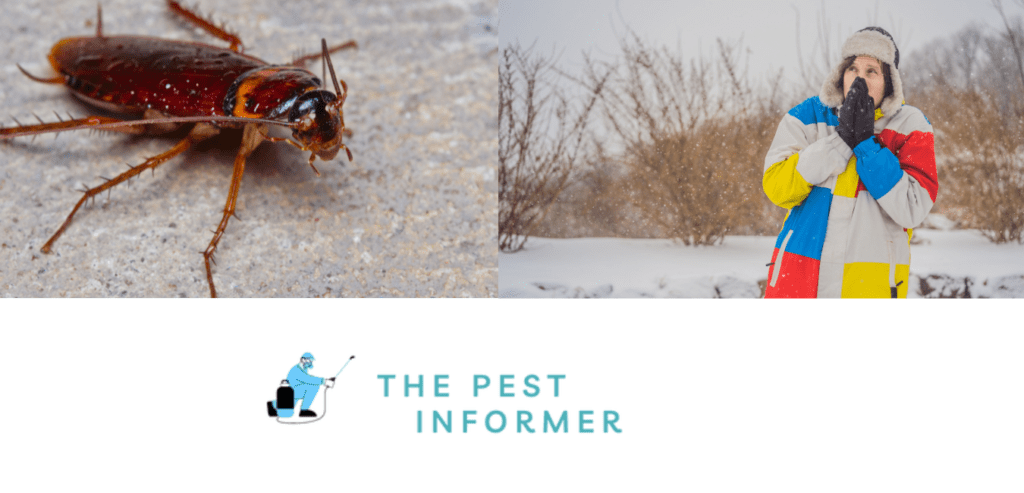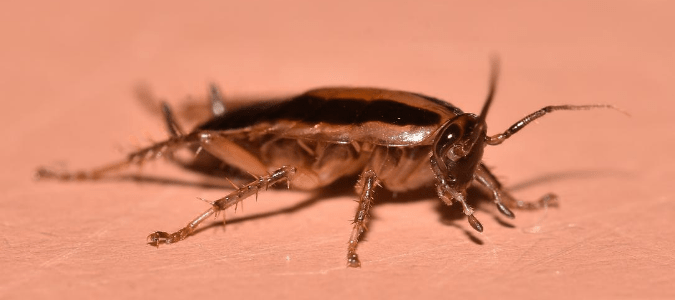Do you find yourself wondering when those pesky roaches will finally make their exit? Look no further, as we uncover the answer to the much-awaited question – what season do roaches leave? In this article, we’ll explore the patterns and behaviors of these unwanted house guests, shedding light on when you can expect some relief from their presence. Let’s dive into the fascinating world of roach departure seasons and uncover the secret behind their timing.


Factors That Influence Roach Behavior
Roach behavior is influenced by various factors that affect their activity and habits. Understanding these factors can help in managing and preventing infestations. The key factors that influence roach behavior are temperature, food availability, humidity, light, population density, and predators.
Temperature
Temperature plays a significant role in roach activity. Roaches are cold-blooded creatures, meaning their body temperature is dependent on the surrounding environment. Warmer temperatures accelerate their metabolism, leading to increased activity and reproduction. Conversely, colder temperatures slow down their metabolism, resulting in reduced activity and even hibernation.
Food Availability
Food availability is another crucial factor that influences roach behavior. Roaches are opportunistic feeders and can thrive in environments with ample food sources. They are known to feed on a wide range of organic matter, including leftover food, crumbs, and even pet food. When food is readily accessible, roach populations tend to grow rapidly.
Humidity
Humidity levels affect roach behavior, particularly regarding their choice of habitat and water requirements. Roaches prefer environments with high humidity because they lose moisture through their exoskeletons. High humidity can create an ideal breeding ground for roaches, as it helps maintain their hydration levels and supports egg development.
Light
Roaches are nocturnal insects and are most active during the night. They are photophobic, meaning they are averse to bright light, which can deter their movement. Dark and dimly lit areas serve as favorable hiding spots for roaches during the day.
Population Density
Roaches thrive in areas with a high population density of their kind. When roach populations are concentrated, their competition for resources increases. This can drive them to explore new territories, leading to potentially widespread infestations.
Predators
Predators also impact roach behavior. Natural predators like certain species of spiders, birds, and reptiles can help control roach populations by preying on them. In the presence of predators, roaches may change their behavior, such as hiding more frequently or seeking shelter indoors.
Roach Behavior in Different Seasons
Understanding how roach behavior varies in different seasons is essential for effective pest management. Roaches’ activity levels, reproduction rates, and habitat preferences change with the seasons. Let’s explore how roach behavior differs in each season.
Spring
As the weather warms up and plants start blooming, roach activity increases. Spring marks the beginning of the breeding season for many roach species. The warmer temperatures and increased food availability provide favorable conditions for roaches to reproduce and thrive. Additionally, spring is when roaches start hatching from their egg cases, leading to population growth.
Summer
Summer is the season of peak roach activity. The combination of warm temperatures, abundant food sources, and longer daylight hours creates optimal conditions for roach reproduction. Roaches are more active during this season and may also seek shelter indoors to escape the intense heat and dryness outside.
Fall
As fall approaches, roach activity gradually decreases. The dropping temperatures and reduced food availability lead to a decline in their reproduction rates. During this season, roaches tend to focus on preparing for winter by finding suitable shelter and food sources. However, it is crucial to note that fall is the time when roach infestation potential increases as they search for warm indoor spaces.
Winter
Winter brings a significant change in roach behavior. The colder temperatures prompt roaches to seek warmth by moving indoors. Their activity levels decrease, and they adopt survival strategies to conserve energy. Roaches may hide in cracks, crevices, and warm areas in homes to escape the harsh weather conditions outside.


How to Prevent Roach Infestation in Any Season
Preventing roach infestations requires consistent effort and the implementation of preventive measures. Here are some key steps to prevent roach infestation in any season:
Keep a Clean Environment
Maintaining a clean environment is crucial to deter roaches. Clean up spills promptly, wipe down surfaces, and regularly vacuum and mop your floors. Roaches are attracted to food debris and organic matter, so eliminating these food sources can discourage them from infesting your space.
Store Food Properly
Properly storing food is essential to prevent roaches’ access to it. Store food in airtight containers and avoid leaving uncovered food out in the open. This reduces the chances of roaches detecting and reaching potential food sources.
Seal Gaps and Cracks
Sealing gaps and cracks in your home’s walls, floors, and foundation can prevent roaches from entering. Inspect your property regularly for any openings and seal them with caulk or suitable sealants. Roaches can squeeze through tiny gaps, so paying attention to even the smallest openings is crucial.
Eliminate Moisture
Roaches are attracted to moisture-rich environments. Fix any leaks or plumbing issues that can create damp environments. Use dehumidifiers in areas prone to high humidity and ensure proper ventilation to reduce moisture levels.
Reduce Clutter
Clutter provides hiding spots for roaches, making it crucial to reduce clutter in your home. Declutter areas like basements, attics, and storage spaces regularly to eliminate potential roach hiding spots.
Regularly Clean Trash Cans
Dirty trash cans can attract roaches, so regularly clean them and ensure they have tight-fitting lids. Dispose of trash regularly to minimize the chances of roaches finding a food source.
Properly Dispose of Garbage
When disposing of garbage, make sure to use sealed bags and keep trash bins away from your house’s immediate vicinity. Roaches can be attracted to overflowing or improperly managed garbage, so proper disposal is essential.
Use Roach Baits and Traps
Roach baits and traps can be effective in controlling infestations and capturing roaches. Place bait stations or traps in areas where roaches are commonly found, such as kitchens and bathrooms. Follow the instructions provided with the products for best results.
Hire Professional Pest Control Services
If you’re dealing with a severe roach infestation or need expert assistance, consider hiring professional pest control services. Pest control professionals have the knowledge and tools to effectively eliminate roach infestations and provide long-term solutions.
Regular Inspections
Conduct regular inspections of your home, paying attention to potential entry points and areas susceptible to roach infestation. Identify and address any signs of roach activity promptly to prevent the infestation from spreading.
Common Locations for Roaches to Hide
Roaches can hide in various locations within your home. Knowing these common hiding spots can help you target your prevention efforts effectively. Here are some common locations for roaches to hide:
Kitchen
The kitchen is one of the most favorable areas for roaches due to the ample availability of food and moisture. Roaches can hide under sinks, behind appliances, in cabinets, and along baseboards.
Bathroom
Bathrooms provide roaches with both moisture and warmth. They can hide in drains, plumbing areas, behind toilets, under bathroom sinks, and in cabinets.
Basement
Basements are often damp and cluttered, making them attractive hiding spots for roaches. Pay attention to cracks, crevices, and dark corners in the basement, as roaches can reside there.
Crawlspaces
Crawlspaces are often dark, humid, and rarely visited, making them ideal roach habitats. Inspect crawlspaces for signs of roach activity and address any issues promptly.
Garage
Roaches can enter the garage through various entry points and find shelter in cardboard boxes, old furniture, and stored items. Regularly clean and organize your garage to minimize potential hiding spots.
Attic
Attics provide roaches with warmth and insulation. Inspect your attic for any cracks, gaps, or openings that can allow roach entry.
Laundry Room
Laundry rooms often have warm and damp environments, making them attractive to roaches. Keep laundry areas clean and free of piles of clothes or other debris that can serve as hiding spots.
Drain Pipes
Drain pipes offer roaches easy access to moisture and can act as pathways for their movement. Regularly clean and inspect drain pipes to prevent roaches from using them as hiding spots.
Wall Voids
Roaches can hide inside wall voids, especially if there are openings or cracks in the walls. Sealing these openings and addressing any wall-related issues can help prevent roach entry.
Appliances
Roaches can find shelter behind and inside appliances such as refrigerators, stoves, and dishwashers. Regularly clean and move appliances to ensure no roaches are hiding in these areas.


Health Risks Associated with Roach Infestation
Roach infestations pose several health risks to humans. Here are some health risks associated with roach infestations:
Allergens and Asthma
Roaches produce allergens that can trigger allergic reactions in sensitive individuals. These allergens can lead to symptoms such as sneezing, coughing, itchy eyes, and exacerbate asthma symptoms.
Food Contamination
Roaches can contaminate food and food preparation surfaces with their saliva, feces, and shed skin. Consuming contaminated food can cause foodborne illnesses and gastrointestinal issues.
Spread of Diseases
Roaches can carry and transmit diseases, including salmonella, E. coli, and various types of bacteria, through their bodies and excrement. Contact with roach droppings or surfaces contaminated by roach excrement can lead to infections.
Triggering Respiratory Issues
The presence of roaches and their allergens can worsen respiratory conditions such as bronchitis and chronic obstructive pulmonary disease (COPD). People with existing respiratory issues may experience increased symptoms in roach-infested environments.
Skin Irritation
Roach bites or contact with their excrement can cause skin irritation and allergic reactions in some individuals. These reactions may manifest as redness, itching, or rashes.
Conclusion
Understanding the factors that influence roach behavior and how it varies in different seasons is vital for effective pest management. By implementing preventive measures, such as maintaining a clean environment, reducing food sources, and sealing potential entry points, you can minimize the risk of roach infestations. Regular inspections, the use of baits and traps, and seeking professional pest control services when needed can help address and prevent roach infestations in any season. By taking these preventive steps, you can safeguard your home and protect yourself from the health risks associated with roach infestations.


Your Expert in Animal Control and Extermination. Trust our experience for humane, effective pest management, protecting your property and ensuring peace of mind with Michael S.





